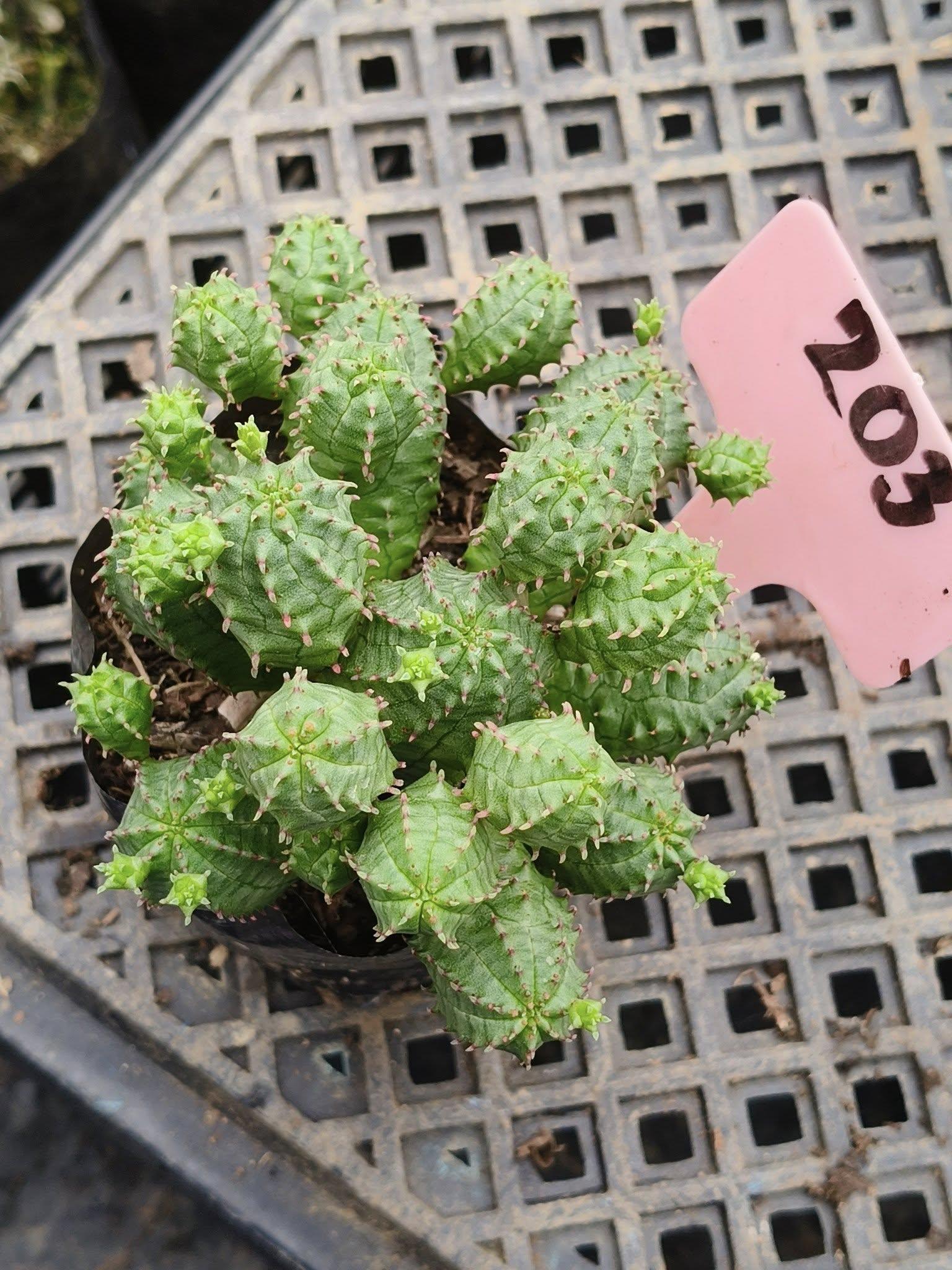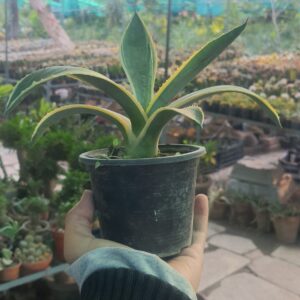🌿✨ Euphorbia pseudoglobosa — The Miniature Globular Euphorbia
Euphorbia pseudoglobosa is a small, clustering succulent native to South Africa. As its name suggests, it mimics the appearance of globular cacti, but it is actually a succulent in the Euphorbiaceae family. This species is particularly popular among collectors for its compact, globose segments, architectural form, and easy care.
Despite its cactus-like look, it contains toxic latex sap, characteristic of euphorbias, which can cause skin irritation. Careful handling is advised during propagation or pruning.
🌿 Botanical Overview
Scientific Name: Euphorbia pseudoglobosa
Family: Euphorbiaceae
Origin: South Africa
Growth Habit: Small, sprawling to mat-forming succulent
Size:
Height: 2 to 4 inches (5–10 cm)
Width: Can spread up to 8–12 inches (20–30 cm) as a clump
USDA Hardiness Zones: 9–11
🍃 Appearance
Stems:
Thick, rounded, globular stems resembling small spheres or short cylinders
Stems are grey-green to dark green, sometimes developing reddish or purple hues under sun stress
Covered with tiny tubercles (bumps) and minimal spines or thorns
Leaves:
Tiny, ephemeral, and short-lived — not a prominent feature
Flowers:
Produces small, yellow to yellow-green cyathia (the unique cup-like flowers of Euphorbias)
Flowers appear in spring to summer
While small, the flowers add a delicate charm against the rounded stems
☀️ Light Requirements
Indoors:
Prefers bright, indirect light
Thrives near a south or west-facing window
Can handle some direct morning sunlight, but too much harsh light can cause leaf scorch
Outdoors:
Grows well in full sun to partial shade
Acclimate gradually to direct sun to avoid sunburn
For best growth and compact form, provide at least 4–6 hours of bright light daily.
🌡️ Temperature & Humidity
Temperature:
Ideal range: 18–30°C (65–86°F)
Should not be exposed to temperatures below 5°C (41°F)
Protect from frost — not cold-hardy
Humidity:
Prefers dry to moderate humidity
High humidity with poor airflow can lead to rot or fungal infections
Provide good ventilation, especially in humid climates.
💧 Watering Routine
Growing Season (Spring to Fall):
Water when the top 1–2 inches of soil are completely dry
Frequency: Typically every 2 weeks, but adjust based on light and heat
Water deeply but ensure excess water drains completely
Winter Dormancy:
Water sparingly, once every 3–4 weeks
Soil should remain mostly dry
🚫 Avoid overwatering, as this is the most common cause of root and stem rot.
🌱 Soil Requirements
Type:
Needs well-draining soil
Best mix:
50% cactus/succulent soil
25% coarse sand
25% pumice or perlite
pH: Neutral to slightly acidic (6.0–7.0)
Good drainage mimics its natural habitat and prevents waterlogged conditions.
🌾 Fertilizing
Growing Season:
Fertilize once every 4–6 weeks with a diluted cactus or succulent fertilizer
Low nitrogen content is preferable, such as 5-10-10 NPK
Winter:
No fertilization needed during dormancy
✂️ Maintenance and Pruning
Pruning:
Minimal pruning needed
Remove any shriveling or damaged stems
Wear gloves when handling to avoid exposure to the toxic latex sap
Pest Control:
Can occasionally attract:
Mealybugs
Spider mites
Scale insects
Inspect regularly and treat with insecticidal soap or neem oil
🌿 Propagation
Stem Cuttings:
Use a sharp, sterile knife to cut a healthy stem segment.
Let the cutting callous over for 3–5 days to prevent rot.
Plant in dry, well-draining soil.
Water lightly after the first week.
Offsets (Pups):
Mature plants often produce offsets that can be gently separated and replanted.
Seeds:
Less common and more time-consuming, but possible under controlled conditions.
Always wear gloves when propagating to avoid skin irritation from sap.
🛡️ Common Issues
Root Rot: From overwatering or poor drainage
Sunburn: Leaves or stems may scorch if abruptly exposed to intense sun
Pests: Mealybugs, scale, and mites under poor air circulation or stress
Proper watering, bright light, and well-drained soil help prevent most issues.
🎍 Decorative Use
Best For:
Succulent collections
Rock gardens
Indoor displays in bright rooms
Small pots for windowsills or desks
Its cactus-like appearance and minimal care needs make it an attractive, low-maintenance choice for both beginners and collectors.
✅ Conclusion
Euphorbia pseudoglobosa is a fascinating, compact succulent with a distinctive globular form perfect for any succulent enthusiast’s collection. With its low water needs, moderate sunlight requirements, and easy propagation, it offers beauty with minimal effort. Just ensure careful handling due to its toxic sap and provide the right soil and watering routine to enjoy this miniature wonder for years.





Reviews
There are no reviews yet.